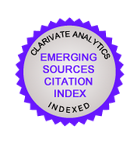Соотношение между видовым богатством и численностью видов в сообществах макрозообентоса (на примере створов рек бассейна Немана)
https://doi.org/10.29235/1561-8323-2025-69-5-399-403
Аннотация
Проведен анализ рангового распределения численности видов макрозообентоса и его взаимосвязи с числом видов для различных створов рек бассейна Немана. Показано, что число видов макрозообентоса связано с их общей численностью, а структура ранжирования таксонов по численности соответствует логнормальному распределению. Коэффициент выравненности структуры сообществ составил в среднем 0,7. В изученных сообществах макрозообентоса отмечена низкая степень перекрытия экологических ниш, что обусловлено широким спектром функциональных трофических групп макрозообентоса и, как следствие, низким уровнем конкуренции между ними.
Об авторе
В. П. СеменченкоБеларусь
Семенченко Виталий Павлович – член-корреспондент, д-р биол. наук, профессор, гл. науч. сотрудник.
Ул. Академическая, 27, 220072, Минск
Список литературы
1. 1. Preston, F. W. The commonness, аnd rarity, of species / F. W. Preston // Ecology. – 1948. – Vol. 29, N 3. – P. 254–283. https://doi.org/10.2307/1930989
2. Verberk, W. Explaining general patterns in species abundance and distributions / W. Verberk // Nature Education Knowledge. – 2011. – Vol. 3, N 10. – URL: https://www.researchgate.net/publication/260136267 (date of access: 20.03.2025).
3. Matthews, T. J. On the species abundance distribution in applied ecology and biodiversity management / T. J. Matthews, R. J. Whittaker // Journal of Applied Ecology. – 2015. – Vol. 52, N 2. – P. 443–454. https://doi.org/10.1111/1365-2664.12380
4. Ugland, K. I. Lognormal distributions and the concept of community equilibrium / K. I. Ugland, J. S. Gray // Oikos. – 1982. – Vol. 39, N 2. – P. 171–178. https://doi.org/10.2307/3544482
5. Relationship between macrozoobenthos structure and hydrochemical characteristics in rivers of different order in the Neman basin / V. P. Semenchenko, V. N. Korneev, M. D. Moroz, G. M. Tishchikov // Water Resources. – 2024. – Vol. 51, N 3. – P. 284–289. https://doi.org/10.1134/s0097807824700799
6. Sugihara, G. Minimal community structure: an explanation of species abundance patterns / G. Sugihara // The American Naturalist. – 1980. – Vol. 116, N 6. – P. 770–787. https://doi.org/10.1086/283669
7. Verberk, W. C. E. P. Explaining abundance-occupancy relationships in specialists and generalists: a case study on aquatic macroinvertebrates in standing waters / W. C. E. P. Verberk, G. van der Velde, H. Esselink // Journal of Animal Ecology. – 2010. – Vol. 79, N 3. – P. 589–601. https://doi.org/10.1111/j.1365-2656.2010.01660.x
8. Cummins, K. W. Feeding ecology of stream invertebrates / K. W. Cummins, M. J. Klug // Annual Review of Ecology, Evolution, and Systematics. – 1979. – Vol. 10. – P. 147–172. https://doi.org/10.1146/annurev.es.10.110179.001051













































